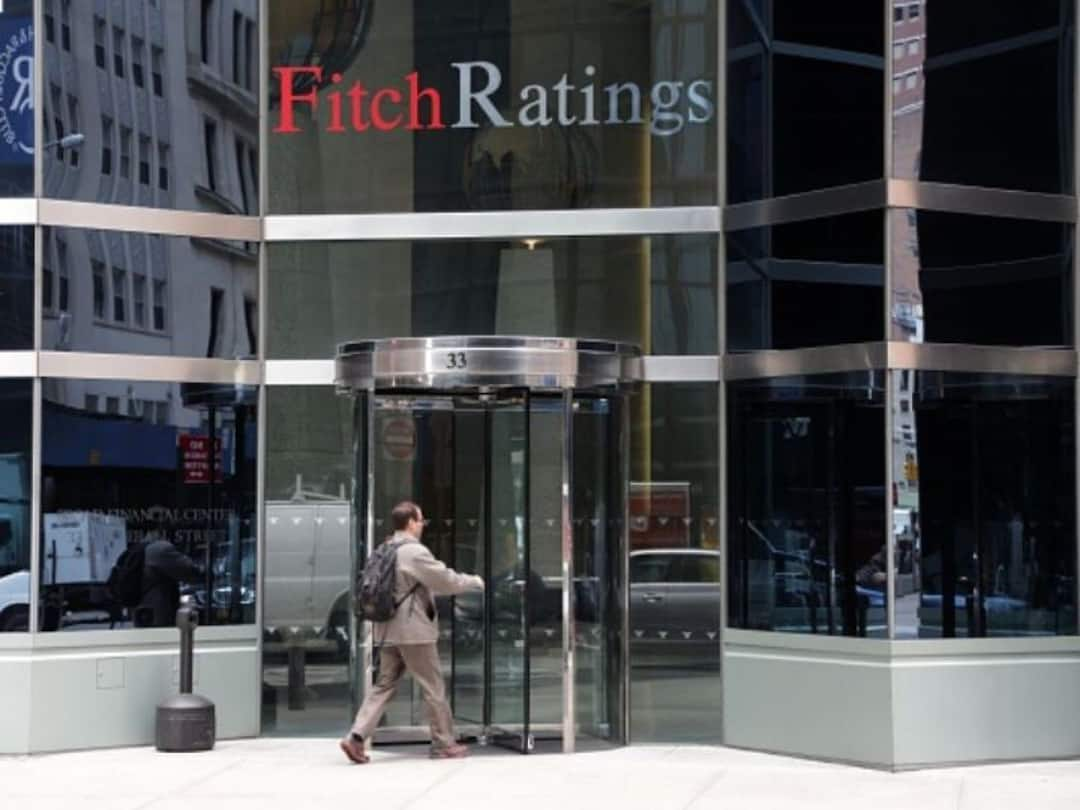Fitch Affirms India's Sovereign Rating On Robust Growth Outlook, Flags Weak Finances
India's rating has been unchanged at 'BBB-', which is the lowest investment grade, since August 2006

Fitch on Tuesday affirmed India's sovereign rating at 'BBB-' with a stable outlook, on robust growth and resilient external finances, but said weak public finances remain a challenge.
India's rating has been unchanged at 'BBB-', which is the lowest investment grade, since August 2006.
"Fitch Ratings has affirmed India's Long-Term Foreign-Currency Issuer Default Rating (IDR) at 'BBB-' with a Stable Outlook," it said in a statement, adding strong growth potential is a key supporting factor for the sovereign rating.
It forecasts India to be one of the fastest-growing sovereigns globally clocking 6 per cent growth in the current fiscal (April 2023-March 2024) supported by resilient investment prospects.
The agency estimates growth in the 2022-23 fiscal at 7 per cent and 6.7 per cent in 2024-25.
"India's rating reflects strengths from a robust growth outlook compared with peers and resilient external finances, which have supported India in navigating the large external shocks over the past year.
"These are offset by India's weak public finances, illustrated by high deficits and debt relative to peers, as well as lagging structural indicators, including World Bank governance indicators and GDP per capita," Fitch said.
All the three global rating agency -- Fitch, S&P and Moody's -- have the lowest investment grade rating on India, with a stable outlook. The ratings are looked at by investors as a barometer of a country's credit worthiness and impacts borrowing cost.
On the domestic equity market front, benchmark indices extended their winning run on Tuesday morning. The 30-share BSE Sensex climbed 226.54 points to 61,990.79 in early trade. The NSE Nifty advanced 68.90 points to 18,333.30.
Fitch said India will face headwinds from elevated inflation, high interest rates and subdued global demand, along with fading pandemic-induced pent-up demand.
Fitch said growth prospects have brightened as the private sector appears poised for stronger investment growth following the improvement of corporate and bank balance sheets in the past few years, supported by the government's infrastructure drive.
Still, risks remain given low labour force participation rates and an uneven reform implementation record.
"India's large domestic market makes it an attractive destination for foreign firms. However, it is unclear whether India will be able to realise sufficient reforms to allow the economy to benefit substantially from opportunities offered by the deeper integration in global manufacturing supply chains, including China+1 corporate strategies that encourage diversification in investment destinations," Fitch said.
It said service sector exports are likely to remain a bright spot and banks appear well-positioned to support sustained credit growth if capitalisation is well-managed.
Fitch estimates inflation to remain near the upper-end of the Reserve Bank's 2 per cent-6 per cent target band, averaging 5.8 per cent this fiscal, against 6.7 per cent last year.
It said that the fiscal consolidation path, under which the centre's fiscal deficit is to be brought down to 4.5 per cent of GDP by 2025-26, remains challenging.
The government has demonstrated a recent commitment to meeting its budget targets. However, we believe it will be challenging to achieve this target, which would require accelerated consolidation of 0.7 pp per year in FY25 and FY26, compared with 0.3 pp in FY23 and 0.5 pp in FY24.
"Future deficit reduction is likely to come mainly from trimming expenditure, in our view," Fitch said.
India's general government debt remains elevated at 82.8 per cent in 2022-23 fiscal relative to the 'BBB' median of 55.4 per cent. Fitch forecasts debt to remain broadly stable at around 83 per cent of GDP in 2027-28.
The lack of sustained debt reduction is likely to increase risks to the rating if India faces a future economic and fiscal shock, Fitch said.
The rating agency further said ample foreign-exchange (FX) reserves continue to provide a cushion to manage external financial volatility.
FX reserves rebounded to USD 584.2 billion (7.1 months of current external payments) as on 21 April 2023, up from their September 2022 low by about USD52 billion. We expect them to continue to rise modestly in the coming years, Fitch said.
Related Video
Union Budget 2025: Arvind Kejriwal lists the shortcomings of the Modi government's budget | ABP News | AAP





































